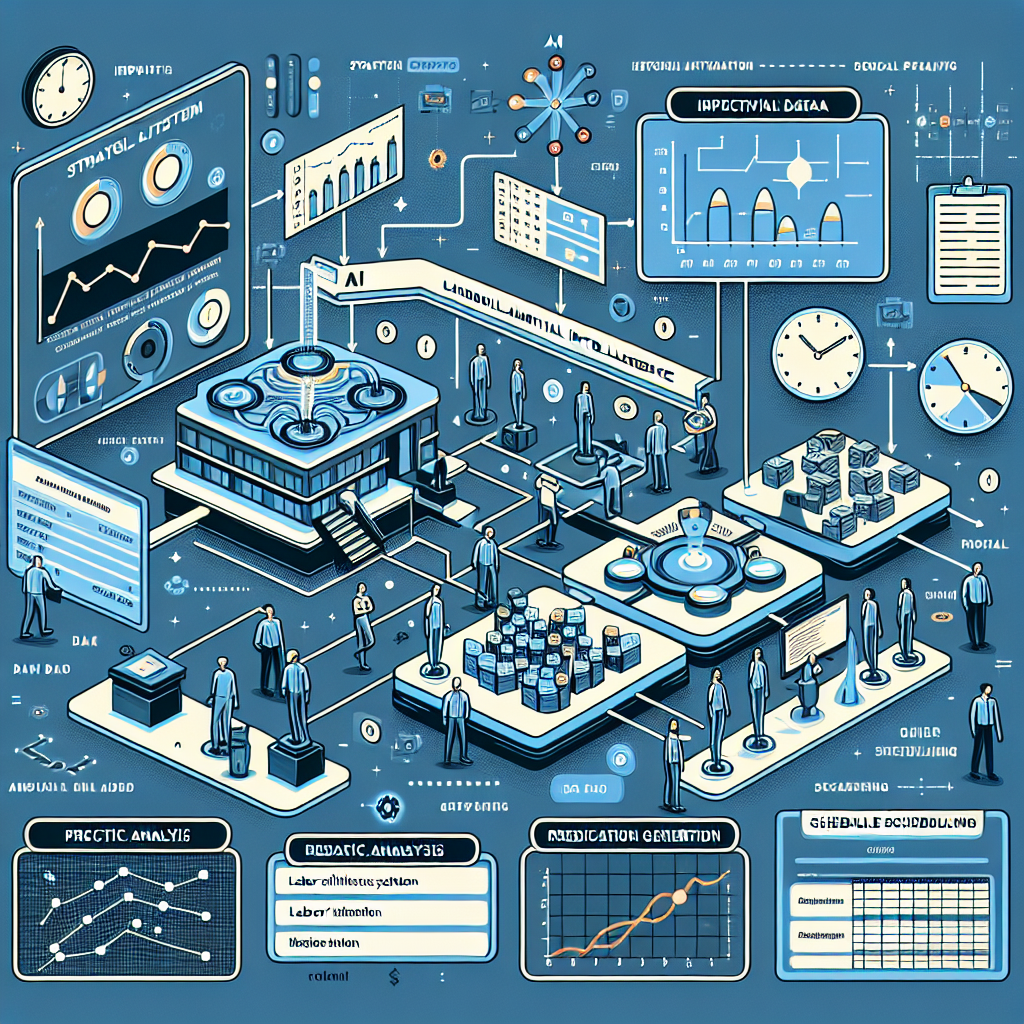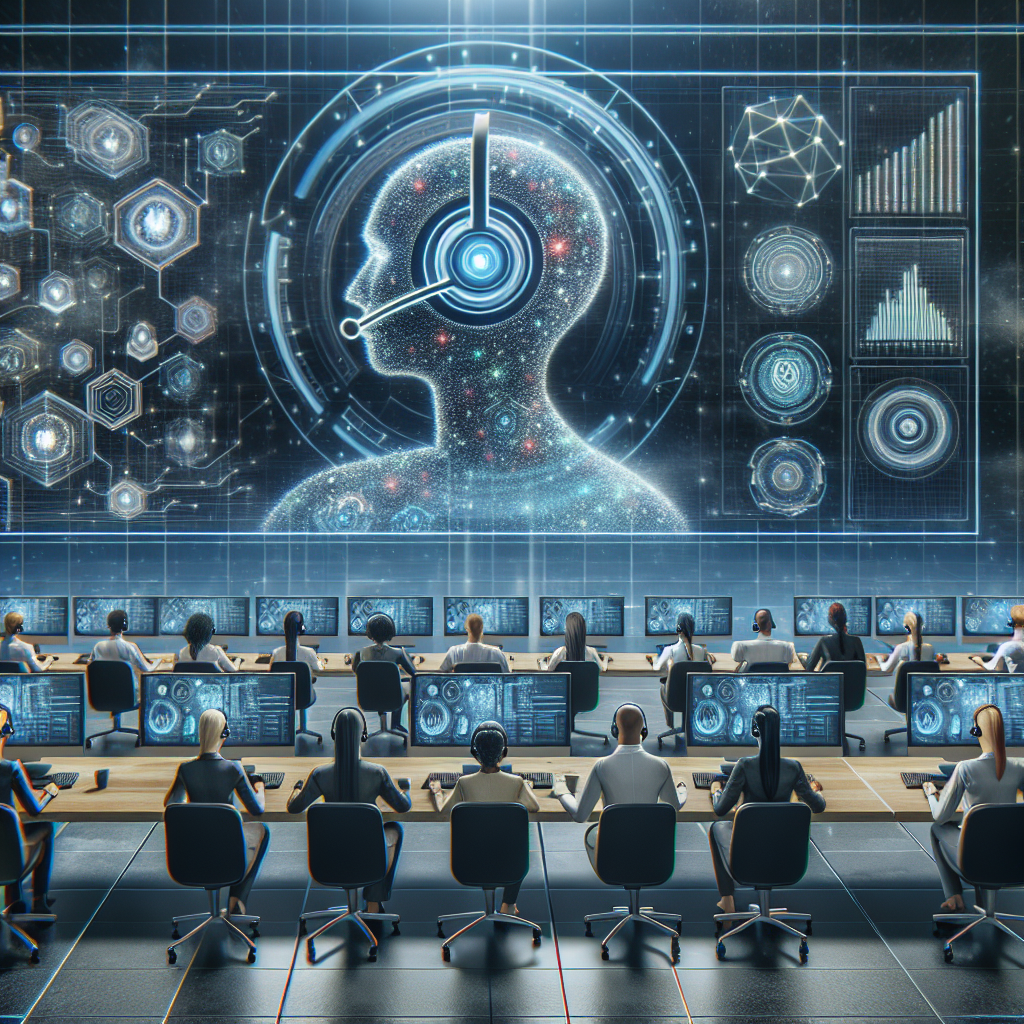
In today's data-driven world, Artificial Intelligence (AI) technologies have been making significant strides across many sectors, and one area that's witnessing a profound impact is the call center industry. Leveraging AI's advanced capabilities can enhance the industry’s operations, and one key aspect where AI plays an instrumental role is in optimizing shift patterns and break times.
AI can utilize techniques such as Machine Learning (ML) to analyze historical call center data, account for variables like call volumes, duration, peak times, and employee efficiency. This intelligence is then used to create optimal staffing models with the goal of enhancing the call center's overall productivity and customer service efficiency.

Shift patterns and break times play a pivotal role in ensuring a smooth running call center. An over-staffed or under-staffed shift can significantly impact key performance indicators like service level, average answer time, and customer satisfaction. Traditional methods often relied on manual inputs and basic trend analysis, which are prone to inaccuracies and do not consider all influencing variables. By contrast, AI-powered solutions offer a more detailed and dynamic analysis, making shift scheduling more responsive and adaptable, thus improving both operational efficiency and employee satisfaction.
Furthermore, AI can also forecast caller demand and allocate the most suitable staff, factoring in their skills, preferences, and overall performance. It can also account for unseen variables such as unexpected spikes in call volumes during particular shift times or sudden employee absenteeism and reschedule shifts accordingly. This adaptability of AI allows for a more versatile workforce management, ensuring that the right people are available at the right time to handle customer calls effectively.
AI's role extends beyond just scheduling. It also helps enforce fair break allocation among the workforce. With AI, administrators can schedule breaks in a way that never leaves the contact center under-staffed, ensuring continuing service excellence during all operating hours, while also providing necessary rest periods for employees, aligning with labor laws and promoting a healthier work environment. More about AI in break allocation can be read here.
In conclusion, AI's transformative potential is immense when it comes to crafting a well-functioning, customer-focused call center. Through predictive data analysis and dynamic scheduling, AI ushers a new era of efficiency and customer satisfaction in call center operations, paving the way for a much leaner, smarter industry.
In the modern call center industry, the introduction of Artificial Intelligence (AI) technologies has fostered increased efficiency, notably in the area of shift planning and break times optimization. Through the use of historical data and predictive analytics, AI tools can thereby enable improved labor allocation, reducing costs, and elevating service levels.
At the core of AI's potency is the concept of predictive analytics. This technique involves the utilization of historical data, statistical algorithms, machine learning and AI to predict future outcomes. Ideally, AI systems meticulously analyze previous call data, charting trends and patterns for call volumes across varying times and seasons. By accurately predicting the expected call volumes at different periods, managers can plan staff schedules proactively, aligning them to meet demand peaks and reduce idle times.
Predictive analytics also offer the flexibility to account for absences and schedule breaks effectively. Call centers are usually fast-paced environments with the requirement for continuous responses. By forecasting typical lull periods, AI can smartly schedule breaks for staff, ensuring that the workflow is least disrupted while the workforce remains motivated and productive.
The advanced machine learning element in AI enables these systems to learn and adapt over time, continually adjusting predictions based on new data, thus further enhancing precision in shift planning. A significant benefit of employing AI in Workforce Management is the ability to accommodate sudden fluctuations in call demand. For example, during promotional campaigns or a crisis event, AI can analyze real-time data to adapt and respond swiftly.
In conclusion, the integration of AI with Call Center Shift Patterns and break times is an inevitable and beneficial advance, turning historical call data into meaningful labor allocation strategies. The use of AI for shift planning represents a proactive step towards optimizing call center operations, minimizing costs, and improving customer satisfaction.
Implementing AI in call center environments allows companies to create dynamic break schedules that adapt to the changing demands of customers. Gone are the days of prescribed breaks that occur regardless of call volume and customer needs. AI leverages real-time call center data to suggest optimal break times, resulting in reduced downtime and an efficient operation that balances both the needs of the employees and call demand.

In traditional shift scheduling, the break times are fixed and don't consider the fluctuating nature of customer calls, which could result in services being unavailable during peak demand hours. On the other hand, an AI-driven dynamic break scheduling algorithm, like that offered by Zulip's call center AI tools, predicts the pattern of incoming calls and allocates breaks during non-peak hours, thus minimizing downtime and improving the overall customer experience.
Such tools use relevant data parameters like historical call patterns, average call duration, and employee availability to predict the best time for breaks. This predictive analysis gives the AI the ability to handle complex scheduling challenges in real-time, adapting to continuous changes in the pattern of incoming calls. The algorithm continually learns and improves from every scheduling decision, making it more accurate over time.
Besides improving customer satisfaction by reducing downtime, dynamic break scheduling also aids in enhancing the work-life balance of call center employees. It ensures their breaks are scheduled at times when they are least likely to be missed on the floor, resulting in less strain during peak load times and contributing to better overall job satisfaction levels. Studies have shown that a better work-life balance leads to improved productivity and employee retention in the long term.
AI-driven dynamic break scheduling marks a significant shift from conventional practices, offering a data-driven, flexible, and adaptive solution to tackle real-time changes in call volume and employee needs. It is revolutionizing call center operations by balancing both customer demand and employee wellbeing.
Integrating artificial intelligence (AI) into workforce management can bring about dramatic enhancements in both scheduling precision and operational efficacy. As call centers often grapple with complex shift patterns and break times, carving out an optimal schedule can turn into a massive challenge. AI tools, with their predictive analytics abilities, can easily be integrated with these mainstream workforce management systems to optimize scheduling accuracy and improve productivity. The standard workforce management tools often fall short when handling intricate call center requirements, and AI neatly supplements such limitations by providing real-time insights and predictive planning.
AI algorithms scrutinize historical data and consider variables like call density, common break times, etc., to predict and schedule the most efficient shift patterns. This ensures that operations continue smoothly during peak hours and employees do not face undue stress due to chaotic shift schedules. AI can even account for unexpected changes and automatically adjust the schedules accordingly. Now, these AI-driven schedule optimizations need not replace the existing systems but can effortlessly synchronize with them.
When aiming at revolutionizing workforce management, integrating AI isn't about replacement; instead, it's all about augmentation. The focus isn't to replace the systems already in place but bolster their capabilities. This can be achieved by integrating AI tools with existing workforce management software. Such integration brings together the best of both worlds - the robust infrastructure and the data management of conventional tools, combined with the predictive prowess and flexibility offered by AI.
Moreover, such integration also enables management to get a more comprehensive view of operations, with AI providing more detailed reports and data analytics. For instance, management can understand the correlation between break times and productivity levels, aligning them optimally for maximizing efficiency. Thus, AI not only smoothens logistical considerations but also arms the management with a data-backed approach towards employee wellbeing and productivity.
Incorporating AI into your workforce management routines can unveil a thriving and productive work milieu whilst achieving peak operational efficiency. And this integration, contrary to popular opinions, is a seamless and low-disruption process with immense benefits in the long run.
As technology evolves, the integration of AI (Artificial Intelligence) in optimizing call center shift patterns and break times has become increasingly pivotal. Here are a few notable case studies that demonstrate the dynamic role of AI in enhancing call center operations.

Case 1: Afiniti’s AI Optimization - According to a Forbes article, Afiniti, a multinational AI firm, made an impressive impact in the call center of a Fortune 500 telecommunications company. By using an AI system to match agents to customers based on behavioral patterns, the company noticed a 2 percent increase in sales conversion rates and an improved customer experience. This AI system also helped optimize work shift patterns and break times based on predicted call volumes.
Case 2: Genesys' AI Forecasting Techniques - Genesys, an international customer experience platform, improved call center operations by leveraging AI for predictive forecasting. Their innovative software allowed them to forecast the call volume accurately, reducing staff requirements by 30%, representing a win for customers, employees, and operational contrast.
Case 3: Informatica's Call Center Improvement - Informatica, a leading enterprise cloud data management platform, utilized an AI-driven virtual assistant to handle routine queries. This freed up their human agents to attend to more complex issues. This not only optimized the use of human resources but also enhanced their shift and break timings to better accommodate the call volume.
In conclusion, AI continues to revolutionize the call center industry, proving its merits in enhancing overall efficiency and effectiveness. The use of AI is not just contained within improving customer interactions, but seeping into optimizing operational aspects like shift patterns and break timings, presenting unlimited potential.
As we let the present sink in, it's equally intriguing to peer into the future of AI specifically in the realm of call center management. Artificial Intelligence (AI) is already transforming our world, and the changes are accelerating. Call center operations lie at the forefront of this transformation, particularly when it comes to optimizing shift patterns and break times.
Artificial intelligence stands set to automate not just mundane responsibilities, but complex decision-making tasks as well. In future, shift planning could become extraordinarily more efficient. A next-gen AI application could leverage predictive analysis to anticipate the volume of inbound and outbound calls at any given time, thus ensuring that the right quantity and quality of staff are on duty when needed. Staffing issues, commonly faced by call centers due to fluctuating demand, would be a tale told by previous generations.
However, AI's contribution isn't limited to scheduling shifts effectively. A profound component of optimized call center operations relates to employee satisfaction: this involves ensuring reasonable workload distribution, adequate break times, and fostering a positive work environment. Enhanced AI in human resources could deliver personalized break schedules: AI, coupled with machine learning algorithms, could analyze individual performance and burnout patterns to suggest ideal break times.
Moreover, real-time predictive models could provide staff with instant feedback, allowing for immediate improvement. Real-time AI models would not only improve overall performance but also ensure the well-being of employees, indirectly boosting the customer experience.
In conclusion, AI is poised to revolutionize call center operations by mastering the art and science of shift planning and break scheduling. However, as we welcome this revolutionary technology, we must concurrently address associated challenges such as the ethical use of AI and data security. In the coming years, the impact of AI on call center management will surely shape the narrative for customer service excellence and employee satisfaction.
Start your free trial for My AI Front Desk today, it takes minutes to setup!








